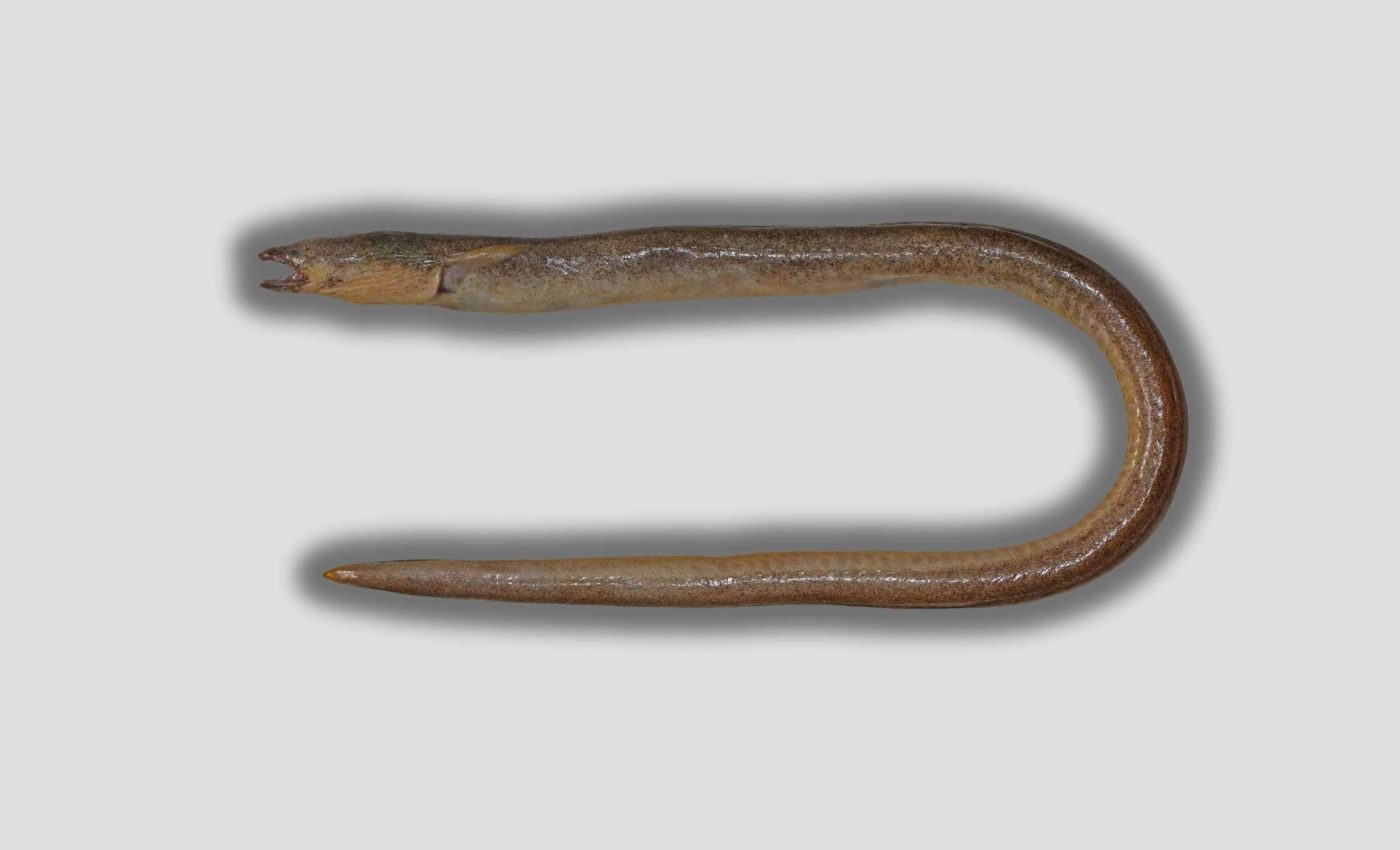
Scientists identify a new species of finless snake eel never recorded by science
Indian researchers have identified a finless snake eel, Apterichtus kanniyakumari, that science had not yet recorded, just off the Colachel coast in Tamil Nadu. The peer-reviewed study confirms it as a new species.
The catch came from a deep trawl near 330 feet, along India’s southwest edge of the Arabian Sea. The find adds a modest but meaningful piece to the region’s biodiversity picture.
Apterichtus kanniyakumari
Taxonomists often rely on meristics, counts of body parts used to separate similar species. This eel shows an unusual mix of pore counts, tooth shape, and vertebral counts that signaled it might be unique.
The work was led by T. T. Ajith Kumar, principal scientist at the ICAR National Bureau of Fish Genetic Resources in Kochi (NBFR). His research focuses on documenting and comparing India’s marine fishes.
The formal diagnosis lists three preopercular pores, nine supratemporal pores, uniserial conical teeth, and a mean vertebral formula of 52, 131. That pattern does not match known species in the same genus.
Fresh specimens appear golden yellow with a pale underside of the head and three dark blotches near the eyes and jaws. These markings help distinguish it from neighboring lookalikes.
How scientists know it is new
Morphology told only half the story. The team used DNA barcoding, a short gene sequence used for species ID, to test where the eel fits among its closest relatives.
Those data placed it in a distinct clade next to a local species named Apterichtus nanjilnaduensis. The genetic split, paired with the distinct body measurements, supports the decision to name it as new.
Records in the Eschmeyer catalog note the type locality off Colachel at about 330 feet. The same entry lists museum numbers for the name bearing specimens.
A holotype, the single name bearing specimen for a species, anchors the name to one preserved fish. That specimen measures about 14.4 inches in total length.
Preserving new species
Once a new species is confirmed, preserving specimens becomes critical. Researchers typically fix one example in formalin, a chemical that prevents decay, and later store it in alcohol for long-term study. This ensures future scientists can reexamine the specimen as methods improve.
Apterichtus kanniyakumari’s holotype and supporting material now rest in national reference collections in Kochi. There, detailed records of its features, colors, and genetic sequences serve as a permanent benchmark for comparing future finds along India’s deep coasts.
Why Colachel matters
The Ophichthidae, snake-eel family with many burrowing species, ranges from shallow coasts to mid waters. These eels often live in sand and mud where nets and dredges occasionally lift them to boats.
Colachel sits where nutrient rich waters brush India’s southwest coast. That mix can support small predators that disappear into the seafloor when not feeding.
Understanding Apterichtus kanniyakumari
Little is known about how this finless snake eel fits into its environment. Most related species burrow into the sandy seabed, emerging at night to feed on small crustaceans and worms. Their narrow bodies and reduced fins make them ideal for life beneath the sediment.
Discovering Apterichtus kanniyakumari opens a new window into the deep-sea food web along India’s southwest coast.
Tracking how it interacts with other organisms, from prey to predators, could reveal how subtle shifts in temperature or nutrients shape hidden marine communities.
Apterichtus kanniyakumari matters
Each new species identified adds detail to the map of life, especially in places where deep-sea habitats remain poorly studied.
The discovery of Apterichtus kanniyakumari highlights how much biodiversity lies hidden along India’s coasts, where industrial fishing and climate shifts continue to reshape ecosystems.
Knowing what lives in these waters helps researchers and policymakers decide which regions need stricter protection or monitoring.
Without that baseline knowledge, conservation efforts risk overlooking species that vanish before science even records them.
Names must be fixed in a ZooBank entry to be considered available under international naming rules. The registry tracks when a name was published and ties it to the paper and specimens.
“Kanniyakumari is blessed with rich marine biodiversity that must be further explored to strengthen India’s biodiversity catalogue,” said Kumar. He also noted the team has added 16 species from India’s coast.
The paper lists both collected fish as unsexed and calls for more sampling. Follow up surveys and basic biology will show how the eel lives and whether it appears in local landings.
Cautious steps will matter if anyone considers it for food. Nutritional checks can screen for contaminants and give a clearer view of risk and value.
The study is published in Zootaxa.
—–
Like what you read? Subscribe to our newsletter for engaging articles, exclusive content, and the latest updates.
Check us out on EarthSnap, a free app brought to you by Eric Ralls and Earth.com.
—–













